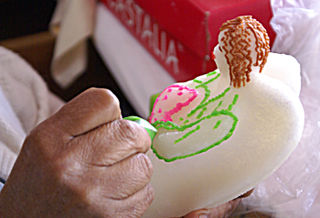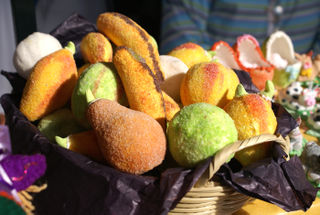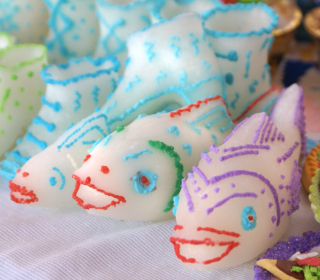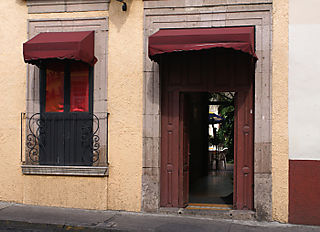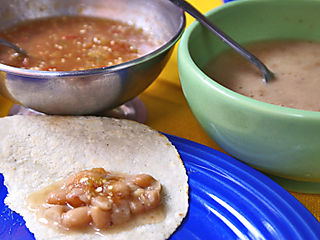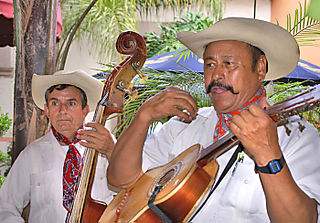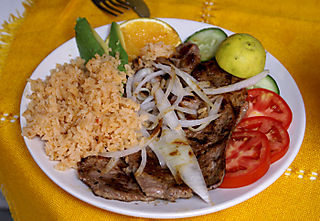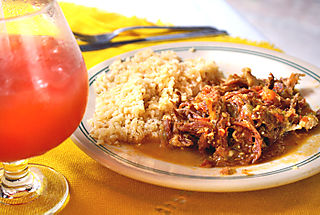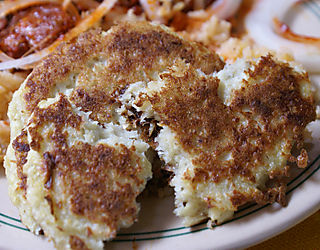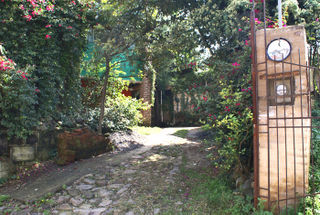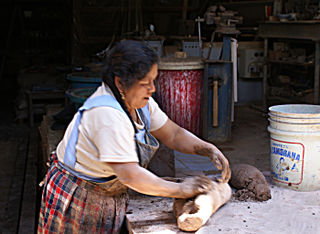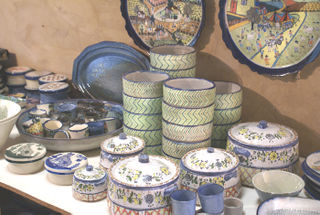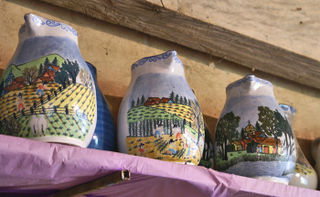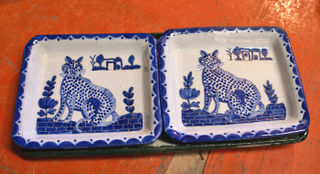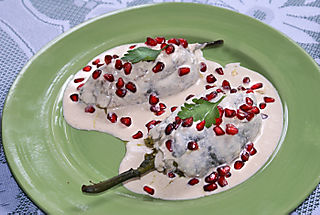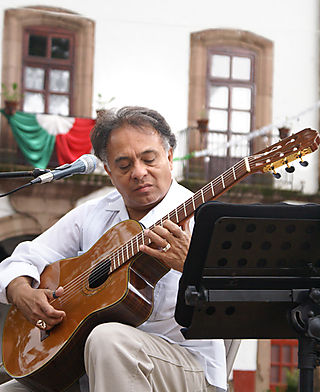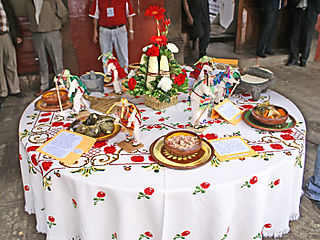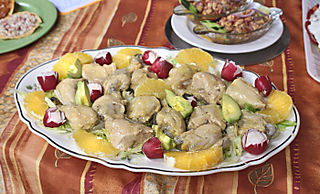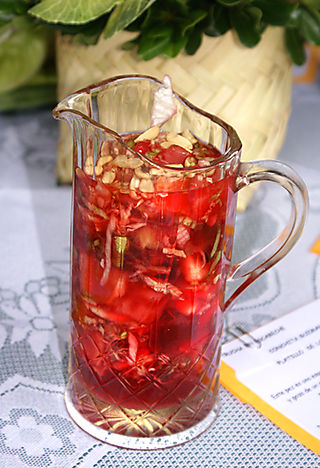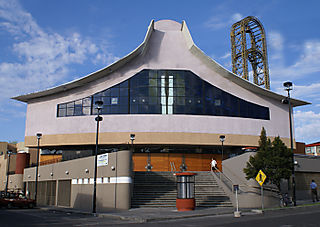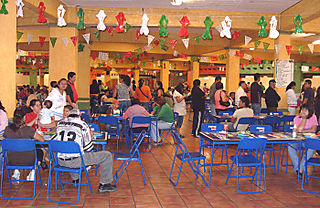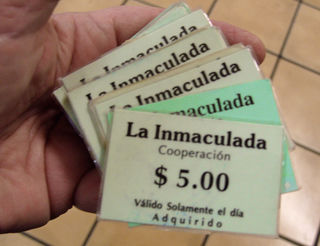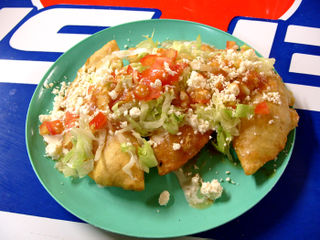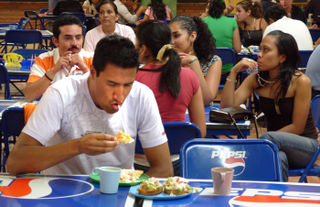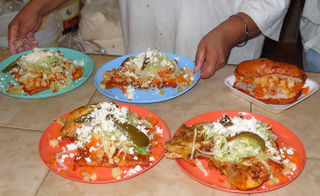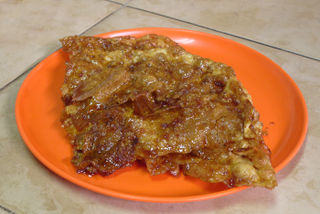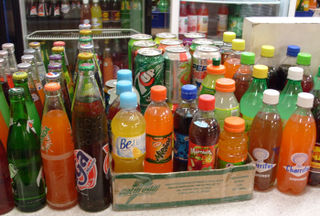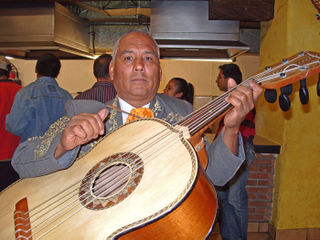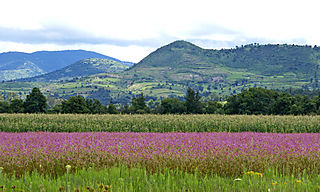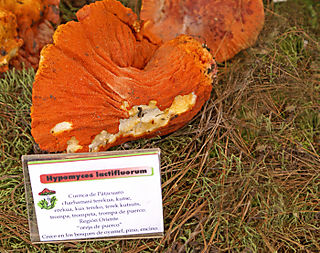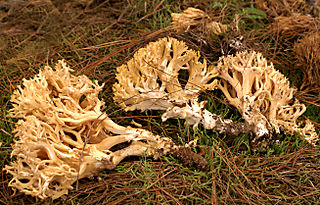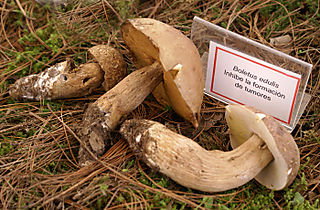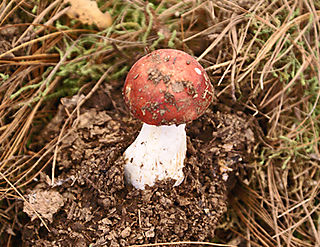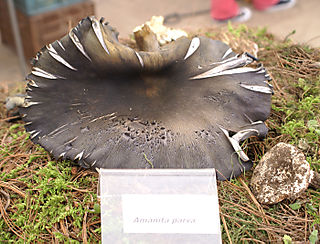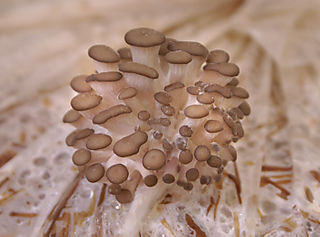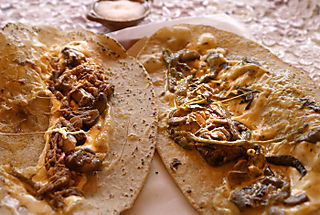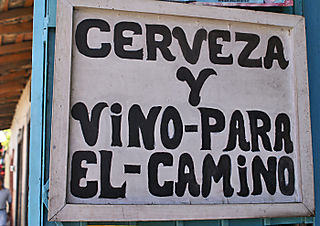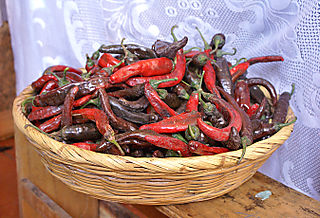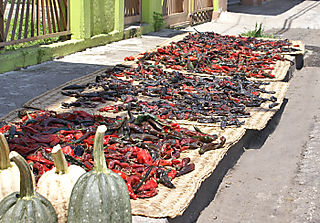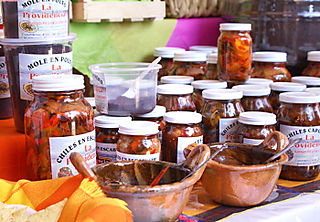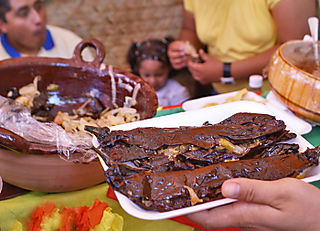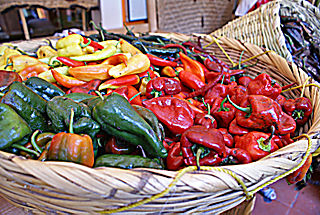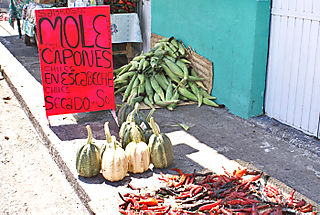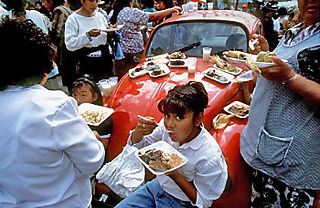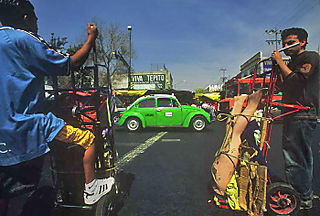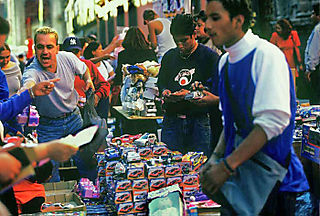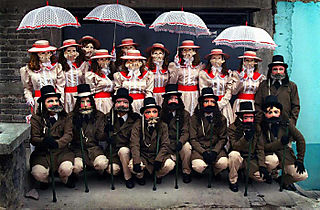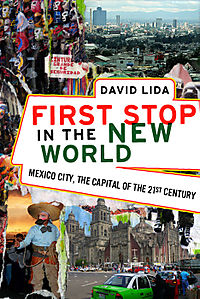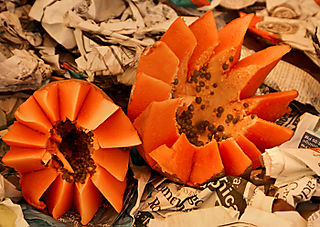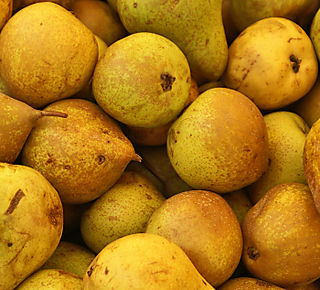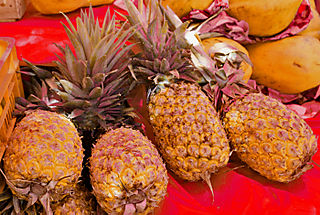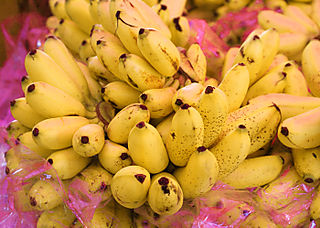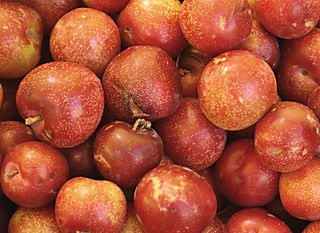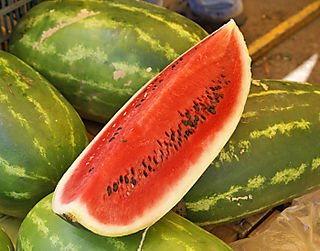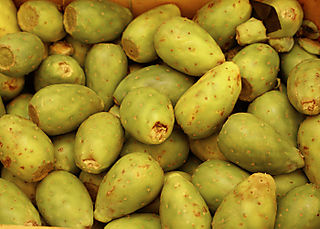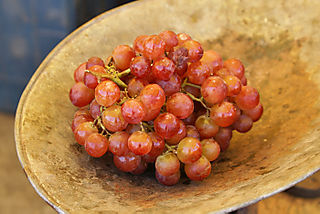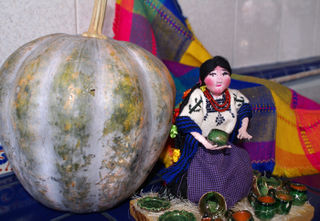
Calabaza de Castilla, the squash Mari brought us, seen here with a charming artisan-made cloth figure of a Purhépecha woman with her miniature pottery. The squash was about 8" high and weighed about three pounds.
Mari, the woman who spoils Mexico Cooks! by doing all of our housework, gave us a squash. She brought two home from her rancho (the family farm) out in the country, one for her and one for us. The squash wasn't very big, as winter squash go, but it was plenty for us. Mari's first question, after we had happily accepted her gift, was whether or not we knew how to cook it. "Con piloncillo y canela, sí?" (With cones of brown sugar and cinnamon, right?)
Even though we knew how to spice the squash and knew how to cut it apart, knowing and doing these things turned out to be worlds apart. Faced with the project, we waffled and hesitated, intimidated by a large vegetable. The squash sat on the counter for several days, daring us to cook it before it molded. Then Chepo (one of the cats) toppled it over and rolled it around the counter, so we moved the squash outside onto the terrace table and gathered our nerve.
On Sunday, I finally decided it was Cook the Squash day. I chose pots, knives, and gathered the rest of the simple ingredients for a mise en place.
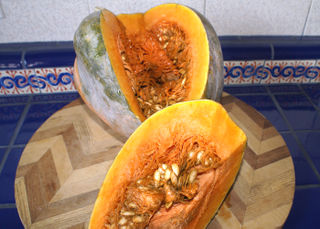
The squash with the first section cut out.
Cutting the squash in sections was the only difficult part of preparing it. The shell of the squash is hard. Hard. HARD. I was careful to keep the knife pointed toward the wall, not toward my body. With the force I needed to cut the squash open, one slip of the knife could have meant instant and deep penetration of my innards. Later that night, our friend Araceli told us that her mother usually breaks a squash apart by throwing it onto the concrete patio! The next morning, Mari told us that her husband had cut their squash apart with a machete. I felt really tough, knowing that I'd been able to cut it open with just a knife and a few choice words.
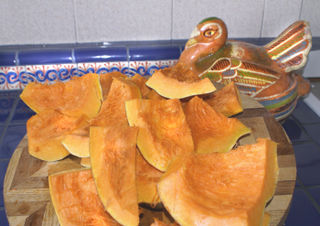
The squash, cut into sections and ready for the pot. On the counter behind the squash is a 1930's Mexican covered cazuela (casserole), the top in the form of a turkey.
Once I had the (few choice words) squash cut open, I scooped out the seeds and goop and cut it into sections more or less 4" long by 3" wide. I did not remove the hard shell.
Meantime, I had prepared the ingredients for the almíbar (thick syrup) that the squash would cook in. Mexican stick cinnamon, granulated sugar, and piloncillo (cones of brown sugar) went into a pot of water. I added a big pinch of salt, tied anise seed and cloves into a square of cheesecloth and tossed the little bundle into the water. The pot needed to simmer for at least three hours, until the syrup was thick and well-flavored.

Clockwise from left: Mexican stick cinnamon, anise seed, piloncillo, and cloves.

Several hours later (after the syrup thickened well), I added the pieces of squash to the pot. Cooking time for this very hard squash was approximately an hour and a half over a low-medium flame.
As the squash cooks in the syrup, it softens and takes on a very appetizing dark brown color. Calabaza en tacha is one of the most typically homey Mexican dishes for desayuno (breakfast) or cena (supper). Well heated and served in a bowl with hot milk and a little of its own syrup, the squash is both nutritious and filling.
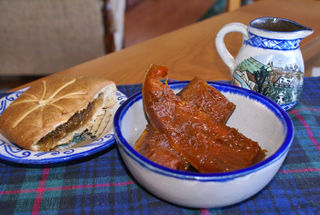
Squash for breakfast! On Monday morning, Mexico Cooks! served up a bowl of squash with hot milk, along with a slice of pan relleno con chilacayote (bread filled with sweetened chilacayote squash paste).
Calabaza en Tacha estilo Mexico Cooks!
Ingredients
One medium-size hard shell winter squash (about 8" high)
6 cups water
14 cones of dark piloncillo (coarse brown sugar)
2 cups granulated sugar
4 Mexican cinnamon sticks about 2.5" long
1 Tbsp anise seed
1 tsp cloves
Preparation
Heat the water in a large pot. Add the piloncillo, the granulated sugar, and the cinnamon sticks. Tie the anise seed and the cloves into a cheesecloth square and add it to the pot. Cook over a slow flame until the liquid is thick and syrupy, approximately three hours.
While the syrup is cooking, prepare the squash. Cut it into serving-size pieces as described above. If the squash shell is very hard, take adequate precautions so that you do not hurt yourself as you cut it in sections. You can always throw it onto the patio!
Add the squash pieces to the thickened syrup and simmer until the squash is soft and takes on a deep brown color. Cool for 15 minutes or
so before serving. Re-heat for desayuno (breakfast) or cena (supper). Serve with hot milk poured over it.
Makes about 16 servings.
¡Provecho!
Looking for a tailored-to-your-interests specialized tour in Mexico? Click here: Tours.


